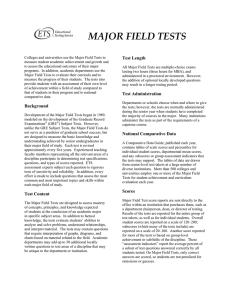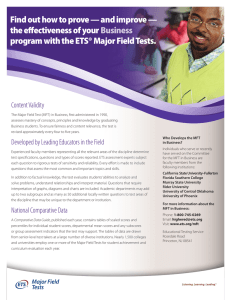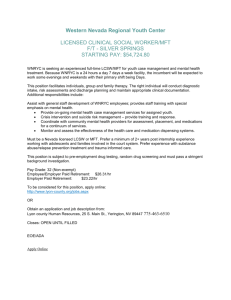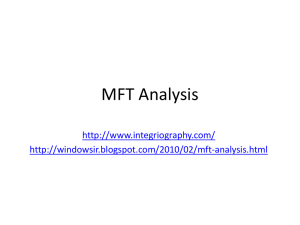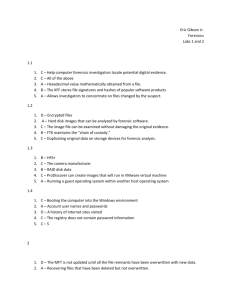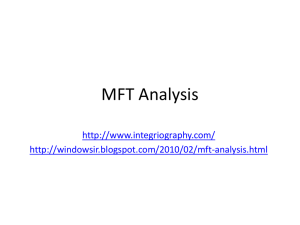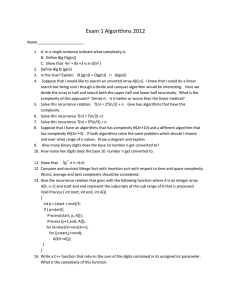Find out how to prove — and improve —
advertisement
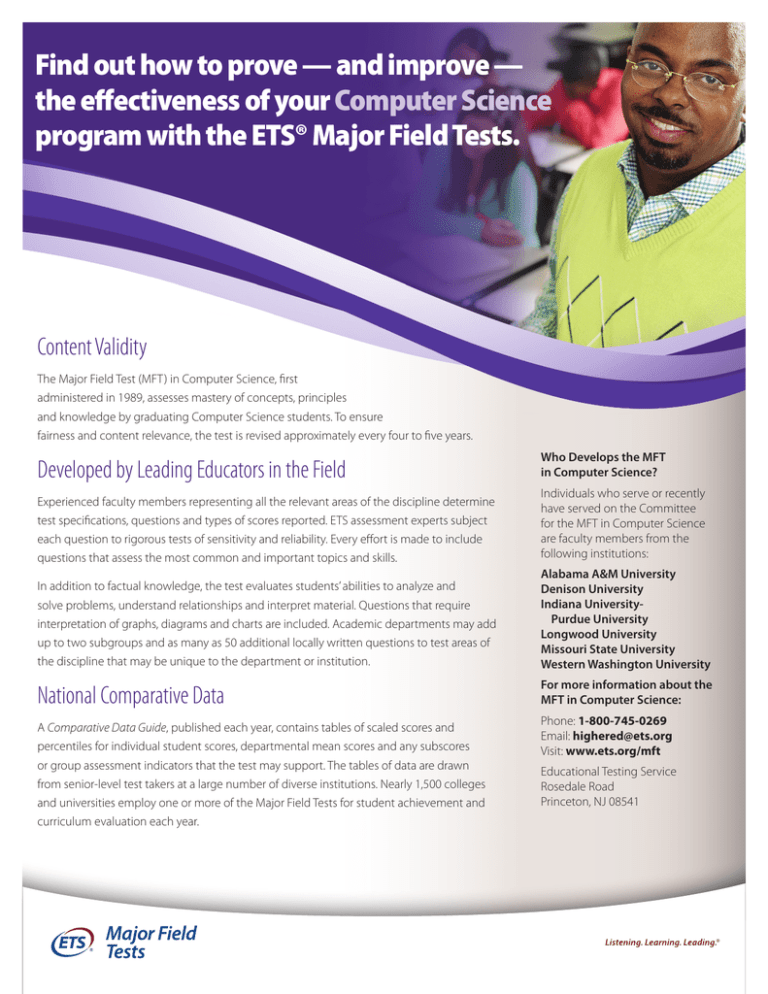
Find out how to prove — and improve — the effectiveness of your Computer Science program with the ETS® Major Field Tests. Content Validity The Major Field Test (MFT) in Computer Science, first administered in 1989, assesses mastery of concepts, principles and knowledge by graduating Computer Science students. To ensure fairness and content relevance, the test is revised approximately every four to five years. Developed by Leading Educators in the Field Who Develops the MFT in Computer Science? Experienced faculty members representing all the relevant areas of the discipline determine test specifications, questions and types of scores reported. ETS assessment experts subject each question to rigorous tests of sensitivity and reliability. Every effort is made to include questions that assess the most common and important topics and skills. Individuals who serve or recently have served on the Committee for the MFT in Computer Science are faculty members from the following institutions: In addition to factual knowledge, the test evaluates students’ abilities to analyze and solve problems, understand relationships and interpret material. Questions that require interpretation of graphs, diagrams and charts are included. Academic departments may add up to two subgroups and as many as 50 additional locally written questions to test areas of the discipline that may be unique to the department or institution. Alabama A&M University Denison University Indiana UniversityPurdue University Longwood University Missouri State University Western Washington University National Comparative Data For more information about the MFT in Computer Science: A Comparative Data Guide, published each year, contains tables of scaled scores and percentiles for individual student scores, departmental mean scores and any subscores or group assessment indicators that the test may support. The tables of data are drawn from senior-level test takers at a large number of diverse institutions. Nearly 1,500 colleges and universities employ one or more of the Major Field Tests for student achievement and curriculum evaluation each year. Phone: 1-800-745-0269 Email: highered@ets.org Visit: www.ets.org/mft Educational Testing Service Rosedale Road Princeton, NJ 08541 Test Content — Computer Science (4HMF) The Major Field Test in Computer Science consists of 66 multiple-choice questions, some of which are grouped in sets and based on materials such as diagrams, graphs and program fragments. Programs can choose when and where to administer the tests. It is designed to take two hours and may be split into two sessions. This test must be given by a proctor. Mathematical operations do not require the use of a calculator. A table containing notations, conventions and definitions is available for reference; it is under “Exhibits” for online users and inside the test book for paper-and-pencil users. The outline below shows the content areas covered on the test and the approximate distribution of questions among content areas. The Test Outline I. Discrete Structures (15–21%) A. Functions, relations and sets B. Basic logic C. Proof techniques D. Basics of counting and number theory E. Graphs and trees F. Discrete probability II. Programming (21–27%) A.Programming Fundamentals: fundamental programming constructs, basic algorithms and problem solving, fundamental data structures, recursion, event-driven programming, objectoriented programming B.Programming Languages: features, paradigms, implementation techniques III. Algorithms and Complexity (16–22%) Advanced data structures and algorithms (including graph algorithms), algorithmic strategies, distributed algorithms, basic computability and complexity, automata theory and formal languages IV. Systems (16–24%) A.Architecture: digital logic and digital systems, machine level representation of data, assembly level machine organization, interfacing and communication B.Operating Systems: operating system principles, concurrency, scheduling and dispatch, and memory management C.Networking V. Software Engineering (3–9%) Software requirements, specifications, design, validation and management VI. Information Management (3–8%) Database systems and data modeling VII. Other (3–8%) Human-computer interaction, graphics, intelligent systems, social and professional issues, web computing and security MFT Computer Science Pseudocode Statement MFT Computer Science Pseudocode Statement We currently do not use any specific programming languages in questions on the currently doScience not use any specific programming languages in questions on the MFT Computer Science MFTWe Computer Exam. Instead, we use a simple pseudocode that we believe Exam. Instead, we use a simple pseudocode that we believe will be easily understood by any computer science will student. be easily understood by any computer science student. See the examples below. See the examples below. Example 1. Class declaration and object instantiation class StudentInfo int studentID string name end class StudentInfo StudentInfo x ¨ new StudentInfo() x.studentID ¨ 1234 // the value 1234 is assigned to x.studentID x.name ¨ "John" print ( x.name ) if ( x.name == "John" ) print ( x.studentID ) end if Example 2. The following procedure swaps the values of two parameters. swap ( pass-by-reference int x, pass-by-reference int y ) int temp ¨ x x ¨ y y ¨ temp end swap Example 3. SelectionSort Preconditions: A is an array of integers. The length of array A is n. The index of array A starts at 0. int[] selectionSort ( pass-by-reference int[] A, int n ) int min int j int i ¨ 0 while ( i £ n - 1 ) min ¨ i j ¨ i + 1 while ( j £ n - 1 ) if ( A[j] < A[min] ) min ¨ j end if j ¨ j + 1 end while if ( min π i ) swap ( A[min], A[i] ) end if i ¨ i + 1 end while return A // returns the sorted array end selectionSort How scores for the Major Field Test in Computer Science are reported Total Score — Reported for each student and summarized for the group Assessment Indicators — Reported for the group* only – Programming and Software Engineering (19) – Discrete Structures and Algorithms (26) – Systems (Architecture, Operating Systems, Networking, Database) (19) Numbers in parentheses are the approximate number of questions in each category * A minimum of five (5) students is required for assessment indicators to be reported. Copyright © 2011 by Educational Testing Service. All rights reserved. ETS, the ETS logo and LISTENING. LEARNING. LEADING. are registered trademarks of Educational Testing Service (ETS). 17556
